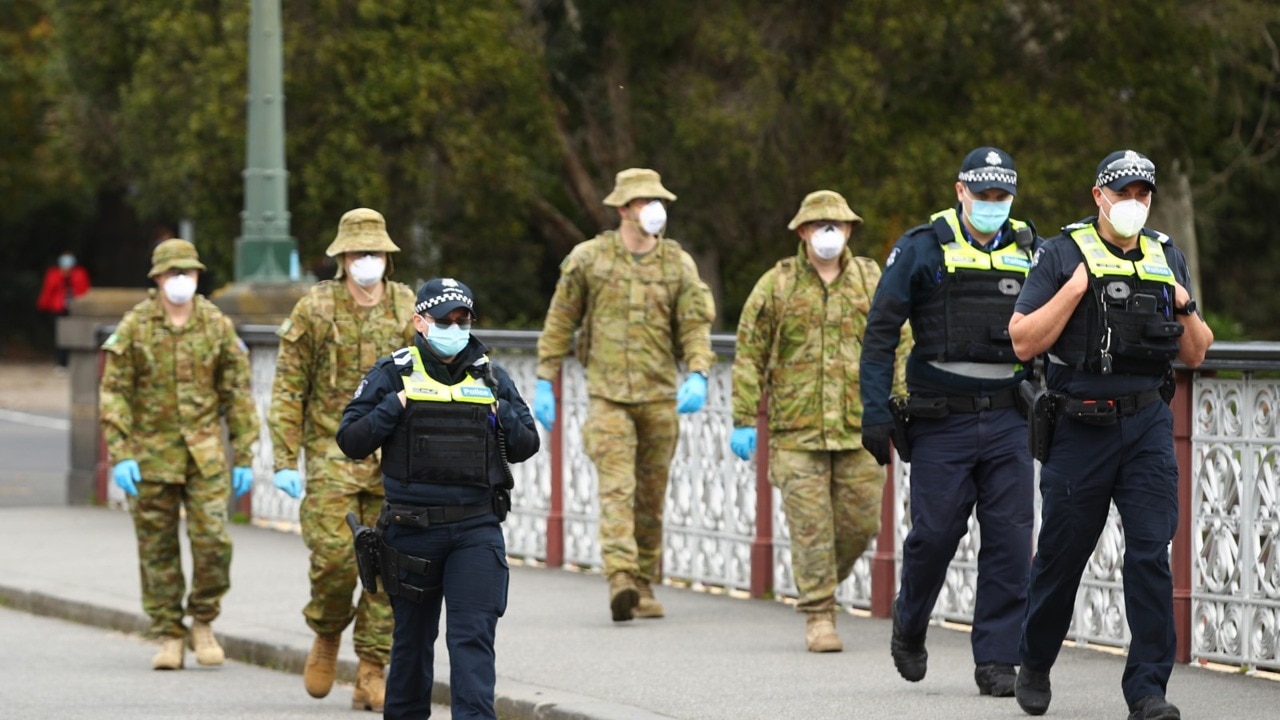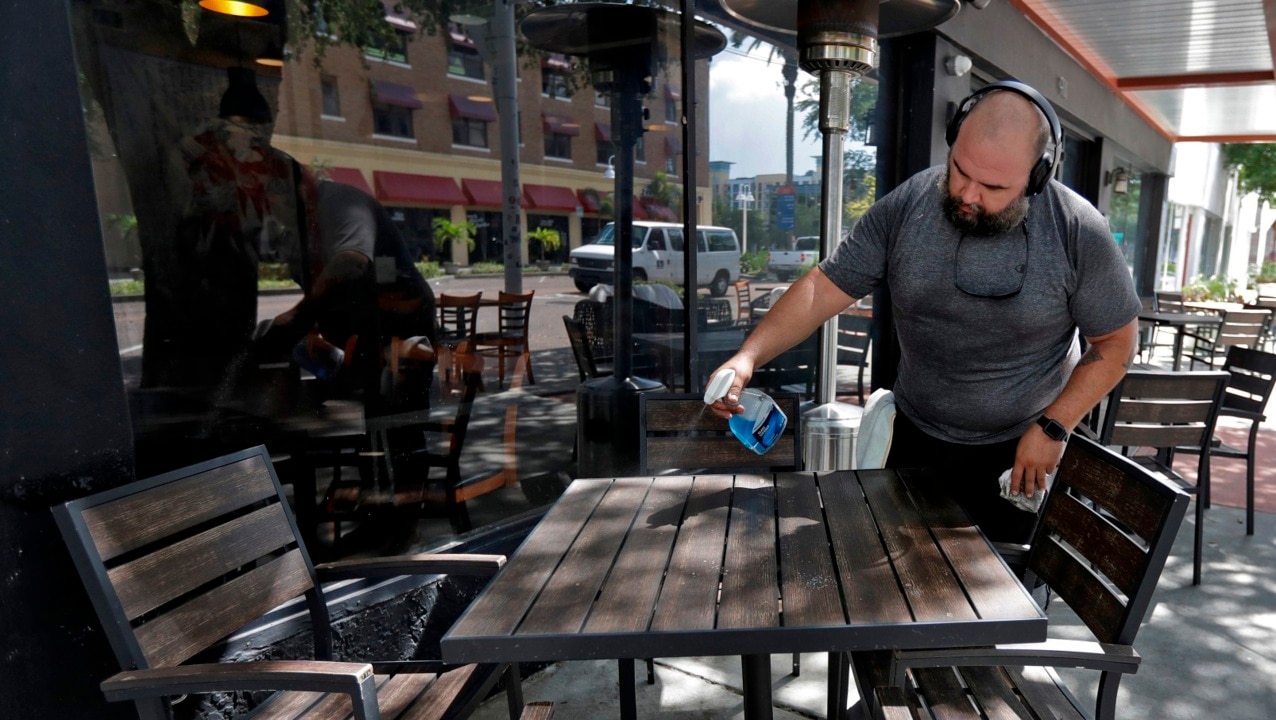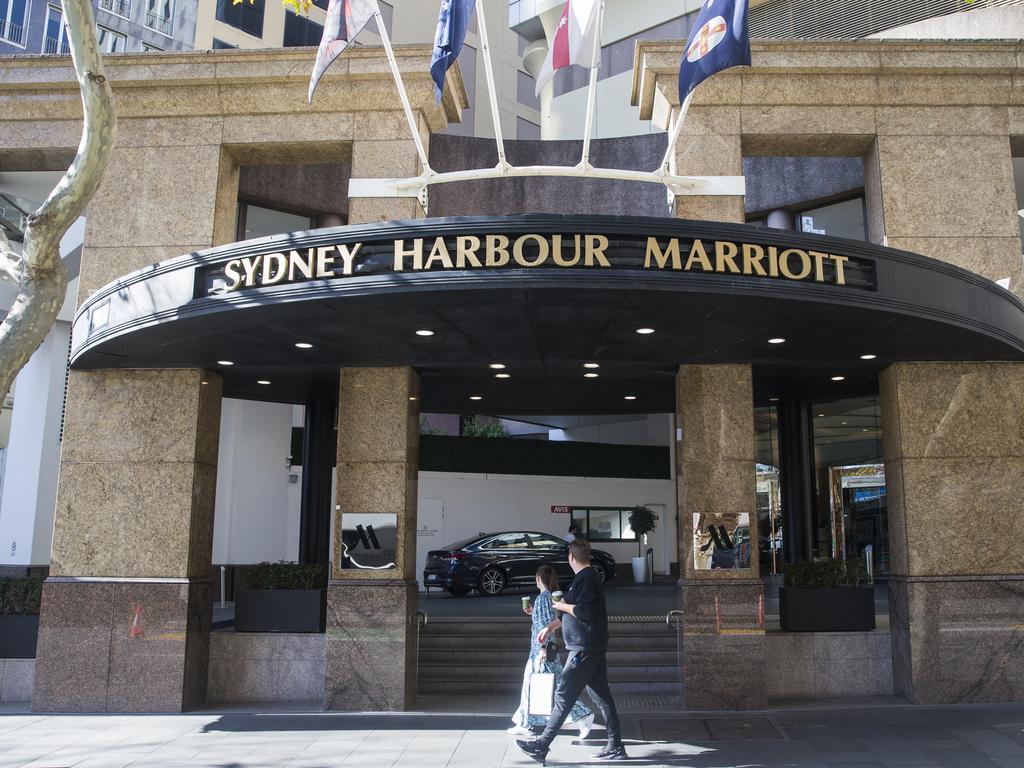Coronavirus: We should kiss these lockdowns goodbye
Even the WHO has doubts about the effectiveness of restrictions and isolation.

But the spectacle of millions of masked-up Victorians, clinking elbows if they find someone else bold enough to have stepped outside, suggests our response is over the top, born of a mistaken belief that governments have more control over the course of events than they really do.
King Canute realised he couldn’t control the tides. Outbreaks of the coronavirus in Victoria and New Zealand should remind us that controlling the spread of an invisible, highly contagious virus is not much easier.
Much damage can be done trying though.
Doing whatever feels right because it “might” help isn’t acceptable when in one of the worst affected countries, Sweden, 99.95 per cent have survived. “Elimination” is a hubristic pipe dream.
The Victorian government’s incompetence in administering its hotel quarantine program, or favouritism in contracting of security guards, may well have hastened the outbreaks.
But they could have occurred anywhere, as they are now in Europe and the US, without much rhyme or reason. Most carriers of the virus display no symptoms, and those who do have little incentive to be tested, lest they be ostracised as one of the grisly “infections” rattled off in daily press conferences.
The high likelihood of mistakes in public administration should caution against bold policies with significant costs. Just as government installation of pink batts was a disaster, policies to “lock down” economies for weeks or months on end will come to be seen as such.
As police are finding, the public won’t fully comply with lockdowns; it’s foolish to assume they will.
If this sounds revolutionary, it was the conventional response to respiratory, airborne-spreading epidemics before coronavirus messed massively with our collective intelligence.
In 2006 the World Health Organisation commissioned a review of the evidence for “non-pharmaceutical interventions” from previous flu pandemics from the 1910s, 1950s and 1960s.
It’s surprising reading.

“Reports from many countries indicate that mandatory case reporting and isolating patients during the pandemic of 1918 didn’t stop virus transmission and were impractical,” said the authors, a collection of top advisers from government scientific bodies in the US, Britain, Australia, Sweden and Switzerland.
“Aggressive interventions to isolate patients and quarantine contacts, even if they are the first patients detected, would probably be ineffective, not a good use of limited health resources, and social disruptive,” they continued.
“Routine mask use should be permitted but not required.”
The NSW government in 1919 concluded benefits from interstate and intrastate travel restrictions within Australia — border quarantine for four days, not 14 — were “very meagre”.
Authorities in Alberta, Canada said “quite simply, isolating individuals and families or quarantining entire communities did not work”.
There was no mention of discouraging handshaking. Stopping almost all international travel wasn’t canvassed either, although they did pooh-pooh checking passengers on arrival, noting 35 million Canadian body temperature tests hadn’t found a single SARS case.
“Screening and quarantine of entering travellers at international borders did not substantially delay introduction, except in some island nations,” they wrote.
Indeed, Australia and New Zealand are likely to have far fewer deaths than other countries, just as they have done in every other pandemic, not because of the specific genius of our lockdowns but because we are far away.

This wasn’t a freak WHO report. One of the great epidemiologists of the 20th century, the late Donald Henderson, argued, also in 2006, that “large scale quarantine” — universal stay at home orders — were “so extreme … they should be eliminated from serious consideration”.
Henderson’s speciality was smallpox, a lot more contagious and lethal than this latest coronavirus. “Communities faced with epidemics … respond best and with the least anxiety when the normal social functioning of the community is least disrupted,” he wrote.
“Strong political and public health leadership to provide reassurance and to ensure that needed medical care services are provided are critical elements. If either is seen to be less than optimal, a manageable epidemic could move toward catastrophe.”
Reserve Bank governor Philip Lowe appears to support living with the coronavirus as a more prudent option than trying to eliminate it. “I would hope that from an economic perspective we could open our borders and that, as a country, we have enough ability and confidence in our capability to keep the virus under control when it pops up,” he said before a parliamentary committee last week.
Perhaps the Henderson of the future, when today’s set of decision-makers responsible for the response has moved on, will come to a different conclusion: “It’s critical to lockdown everything for at least six weeks at the first sign of new viral infections in the community. International and interstate travel must cease indefinitely. And political leaders should be highly visible, reciting new infections and deaths every day without context, with a view to scaring the population into compliance”. I doubt it.
It’s increasingly likely, as philosopher Peter Singer noted in this newspaper last week, that many of the restrictions imposed will be seen as a damaging overreaction that had little effect on viral containment but a highly detrimental impact on livelihoods.








We can probably excuse Henry VI for trying to ban kissing in 1439 without a serious cost-benefit analysis. The Black Death was wiping out close to a third of all people, after all, so it was natural the precautionary principle would swing into action.